How Many Surprises Does the Striped Skirt of the Tang Dynasty Hold?

In TV dramas like The Palm (掌心), we’ve started to see striped hanfu skirts. They bear a striking resemblance to modern fashion trends. But were there really such striped skirts in ancient times? Was the Tang Dynasty incredibly avant – garde?
In fact, these skirts did exist. Skirts featuring near – narrow stripes were trendy from the early Tang Dynasty to the Wu Zhou era. Interestingly, artifacts suggest that their origin can be traced even further back to the Han and Jin dynasties. What’s really eye – catching is that the stripes weren’t printed on. Instead, they were formed by painstakingly sewing individual pieces of fabric together.
The concept of using visual tricks to elongate one’s silhouette wasn’t a modern invention. Our ancestors grasped this fashion principle long ago. These skirts were both fashionable and effective in making the wearer seem taller and sleeker. Clearly, Chinese ancestors had an incredibly “scientific approach to fashion”!
Ⅰ. What is a Poqun Skirt?
A Poqun skirt (破裙, also we call striped skirt) isn’t a damaged skirt. Instead, it’s a name for a type of pieced skirt. The skirt is made by cutting fabric into separate panels and then sewing them together. The number of panels determines the name, like a two – panel Poqun, an eight – panel Poqun, or even a thirty – two – panel Poqun. This style dates back to the Han and Jin dynasties. Actual Poqun skirts have been unearthed from the Huahai Tombs at Bijiatan. These finds show that Poqun skirts could be both pieced together and pleated, with incredibly flexible design options.
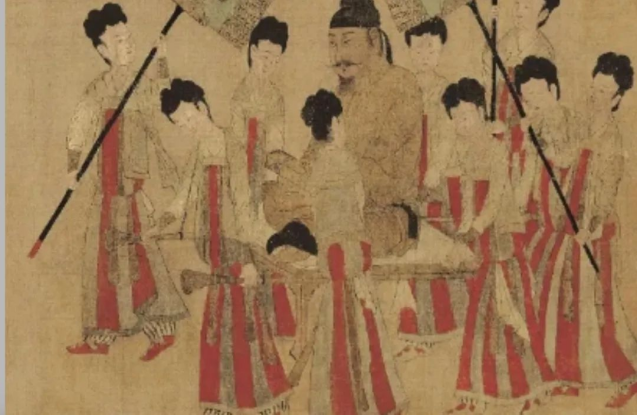
When it comes to color combinations, Poqun skirts can feature either a single color or multiple colors. Skirts with multiple colors are called “Jianshe Qun” (间色裙, inter – colored skirts). In early Tang Dynasty murals, we often see skirts with alternating red and white, black and white, blue and white, or red and blue panels. Reconstructed Poqun skirts are truly beautiful. Worn at a high – waisted position, they make the wearer look taller and slimmer. The everyday – style Poqun skirts are also great for mixing and matching with modern outfits. Resembling A – line skirts, solid – colored Poqun skirts pair perfectly with various garments.
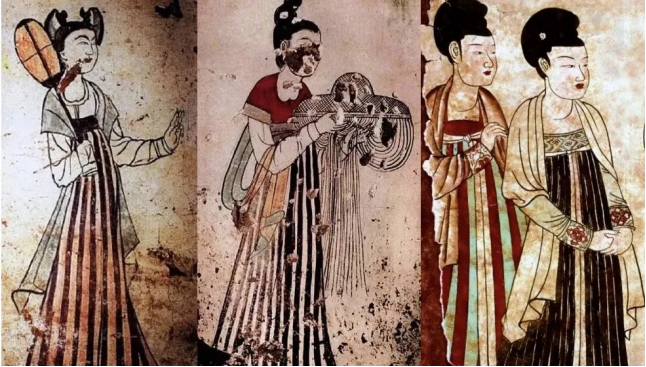
Ⅱ. Styling Recommendations
In my opinion, Poqun skirts blend in really well with modern settings. Many Hanfu enthusiasts who wear morden Hanfu for their daily commute often choose to wear Poqun skirts. Pairing a Poqun skirt with a Tang – style collar top gives you the exact look of a T – shirt and a skirt combo. It’s super casual and easy to pull off!
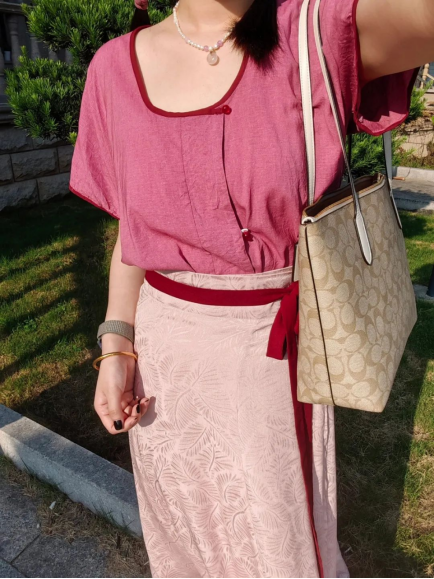
Another great everyday look is to team up a flying – sleeve jacket, a camisole, and a Poqun skirt. It’s not too flashy at all and is perfect for going about your daily business.
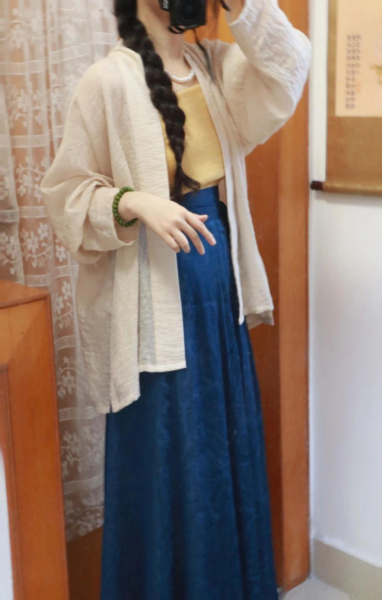
Swapping the top for a regular T – shirt is also a fantastic idea. It’s simple, elegant, and still has a touch of ancient charm. It gives you more of an elegant vibe compared to an ordinary skirt.

Poqun skirts come in a wide range of colors that are both vibrant and sophisticated. Plus, they’re relatively lightweight, making them an excellent choice for wearing while traveling and taking photos. You’ll definitely stand out in the pictures!
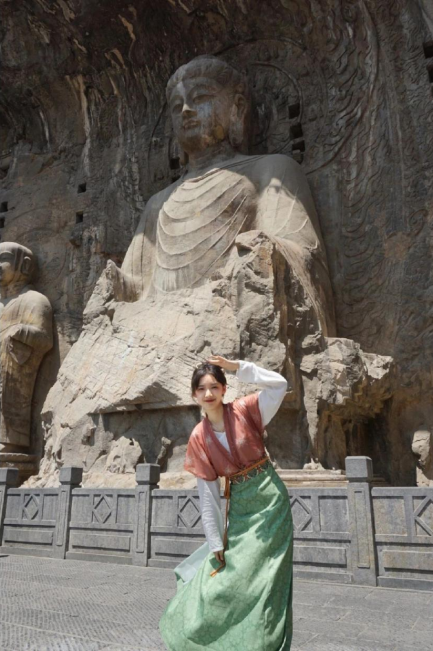
Switching the top to a modern camisole also works wonders. It gives you that unique, independent and otherworldly charm. So go ahead and give these styles a try!
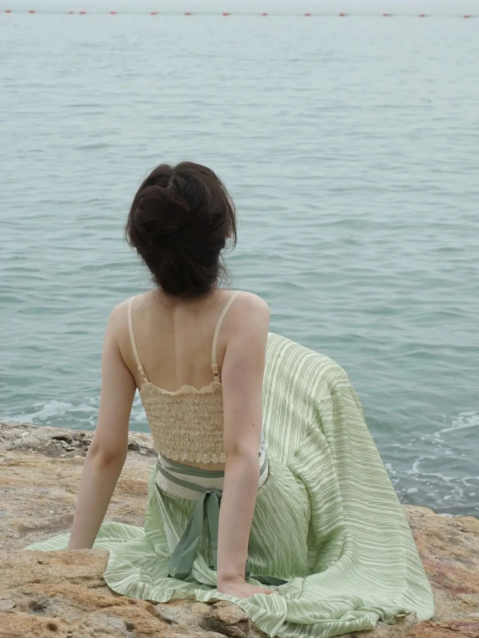
Ⅲ. Introduction to Styles Related to Poqun Skirts
In the early Tang Dynasty, there even emerged extremely narrow Poqun skirts like the one shown in the picture below. Most of these skirts were composed of ten panels. They might look like striped skirts at first glance, but in fact, they were long skirts stitched together with incredibly thin strips of fabric. You could say that the craftsmanship involved was truly intricate.
When overlapping and laying flat two pieces of fabric, it’s crucial to have the front side of one piece face the back side of the other. You can’t have the front sides facing each other or the back sides facing each other. Otherwise, you’ll end up with a twelve-panel Poqun skirt that’s symmetric along the central axis.
It’s said that the process of making this kind of Poqun skirt is so complicated that many bloggers who took on the challenge of making it didn’t succeed. It seems that in ancient times, owning such a Poqun skirt was indeed something to be proud of.
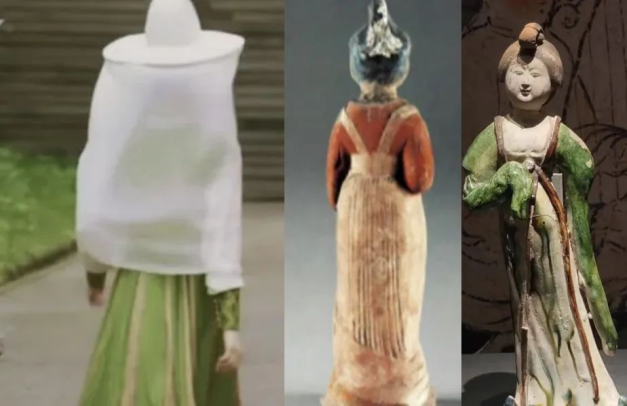
Moreover, in ancient times, there weren’t just striped skirts. There were also striped camisole skirts. The pottery figurines unearthed from the tomb of Lou Rui (娄睿), the Eastern An King of the Northern Qi Dynasty, featured this camisole style, which became even more popular during the Tang Dynasty. It is speculated that this style involved sewing two shoulder straps onto the top part of the skirt. These straps could be used not only on skirts that reached up to the chest but also on those that sat at the waist. They also served a decorative purpose. With these straps, even if you stepped on the skirt while wearing it, you didn’t have to worry about the skirt falling off.
There were even striped camisole pants. These striped pants were actually more appealing and timeless than the latest designs from high – fashion brands. Although the specific structure of the camisoles and striped pants remains unclear, it’s safe to say that Chinese ancestors were truly fashionable. Their sense of style was way ahead of its time!
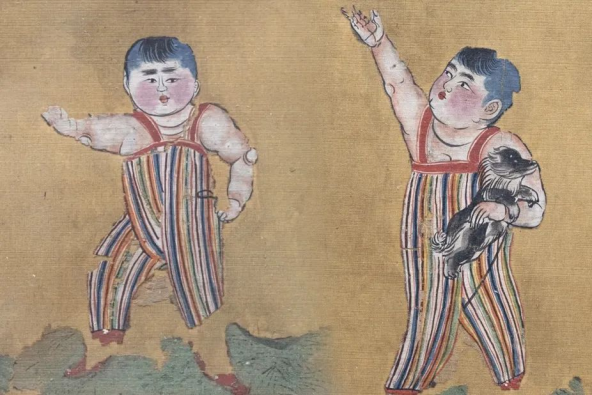
Besides vertical stripes, there were also horizontal ones. Most horizontal – striped designs were printed rather than stitched panel by panel. The item shown in the upper – right picture was unearthed in Astana. It radiates an alluring blend of different cultures. It makes you wonder, what other surprises did the Tang Dynasty have in store? Personally, I find horizontal stripes a bit tricky to style. Vertical stripes, on the other hand, do a better job of making the wearer look tall and slender.
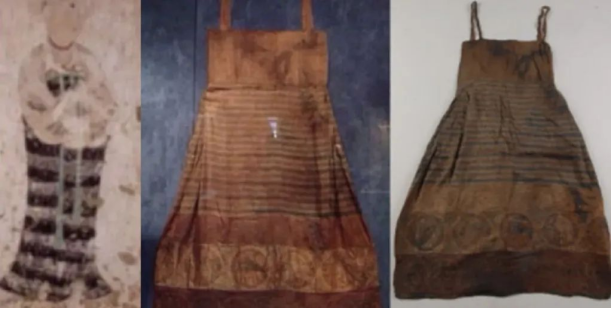
Summary
Last year, a Chinese designer team recreated a Poqun skirt, a remarkable piece of Tang – dynasty clothing, with as many as 90 panels. It gives the impression of thousands of green silk ribbons cascading down. Evidently, we still haven’t fully grasped the scope of Tang – Dynasty fashion. The Tang Dynasty’s inclusive approach to aesthetics, rather than a one – size – fits – fits – all mindset, is exactly what makes the prosperous Tang Dynasty so appealing to us. So, never underestimate ancient aesthetics. Even a single item from that era can outshine modern fashion trends. There are numerous ways to mix and match Poqun skirts for daily wear, easily adapting to modern – day scenarios. Therefore, by studying ancient aesthetics, we can gain a deeper understanding of Eastern fashion.
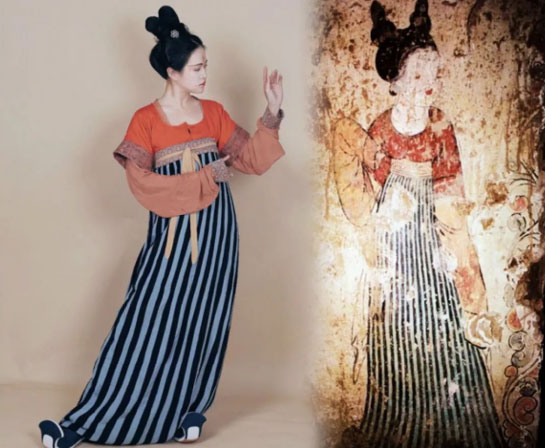
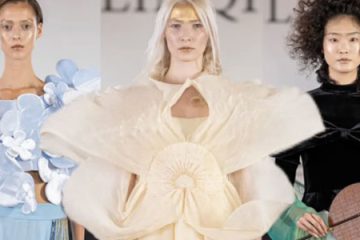
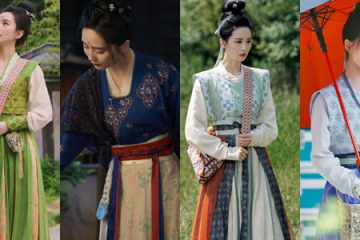
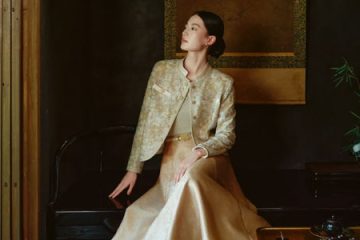
0 Comments